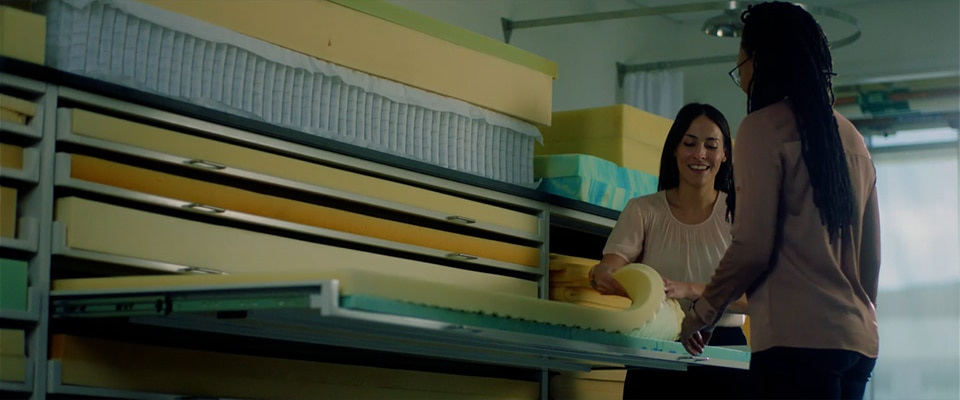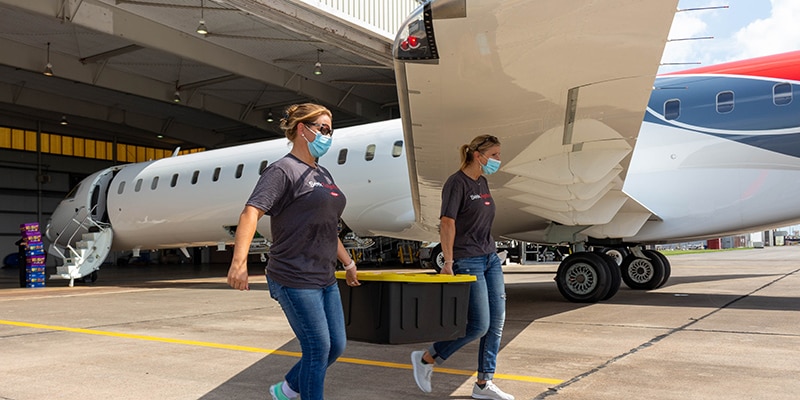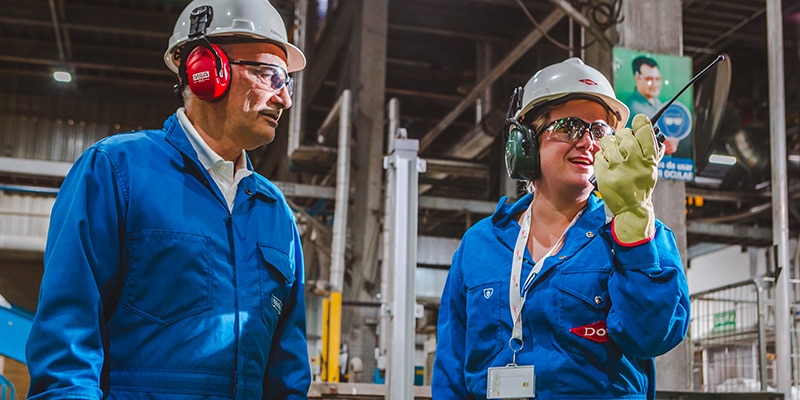An innovative chemical recycling program gives new life
to old mattresses

“Often, when we recycle something, the recycled product doesn’t come back into the cycle as the same product. This was the case with mattress foam, until today.”
Manage end-of life mattresses using chemical recycling
Have you ever thought about what happens when you discard an old mattress? You’re not alone. Every year, millions of mattresses are discarded across the globe, with most ending up either in landfills or being incinerated – neither of which are a sustainable recycling solution. This problem has grown exponentially over the past few years, but with the help of various partners across the value chain, Dow has created a chemical recycling program in Europe called RENUVA™ that can give these old mattresses a second life.
Enhance the power to create circular and low carbon solutions
Dow’s RENUVA™ Mattress Recycling Program brings together every touch point in the value chain to create a new eco-system, from collecting to dismantling to recycling to manufacturing. This collaborative process begins with the collection of end-of-life mattresses. The mattresses are then dismantled, and the old foams are recovered before heading into the recycling phase. Here, Dow has created a program that takes the discarded foams, and through a unique chemical recycling process, creates an entirely new product – RENUVA™ polyol. The process also leverages the world’s first industrial scale reactor for chemical recycling at its plant in France.
The new flexible material is perfect for application in new mattresses, ensuring that the recycling process for old foams is not a linear one, but rather a circular one. When operating at full capacity, the process will recycle polyurethane foam from up to 200,000 mattress per year. According to a recent external Lifecycle Analysis (LCA), the RENUVA™ process leads to a 54% equivalent CO2 reduction compared to the standard polyol production.
But this is just the beginning, a first concrete step in overcoming the mattress waste challenge. This technology represents a whole new future for sustainable recycling as Dow is exploring new applications and new markets to expand this innovative process to. Together, we are working alongside our partners with the goal of creating a fully circular ecosystem where household items are not only properly recycled but reinvented and brought back to life in new and innovative ways.
“With a process like RENUVA™, every large product will be easier to recycle. Because when we imagine better – and bring together the right experts and partners – we can find solutions for even the world’s most complicated problems.”





